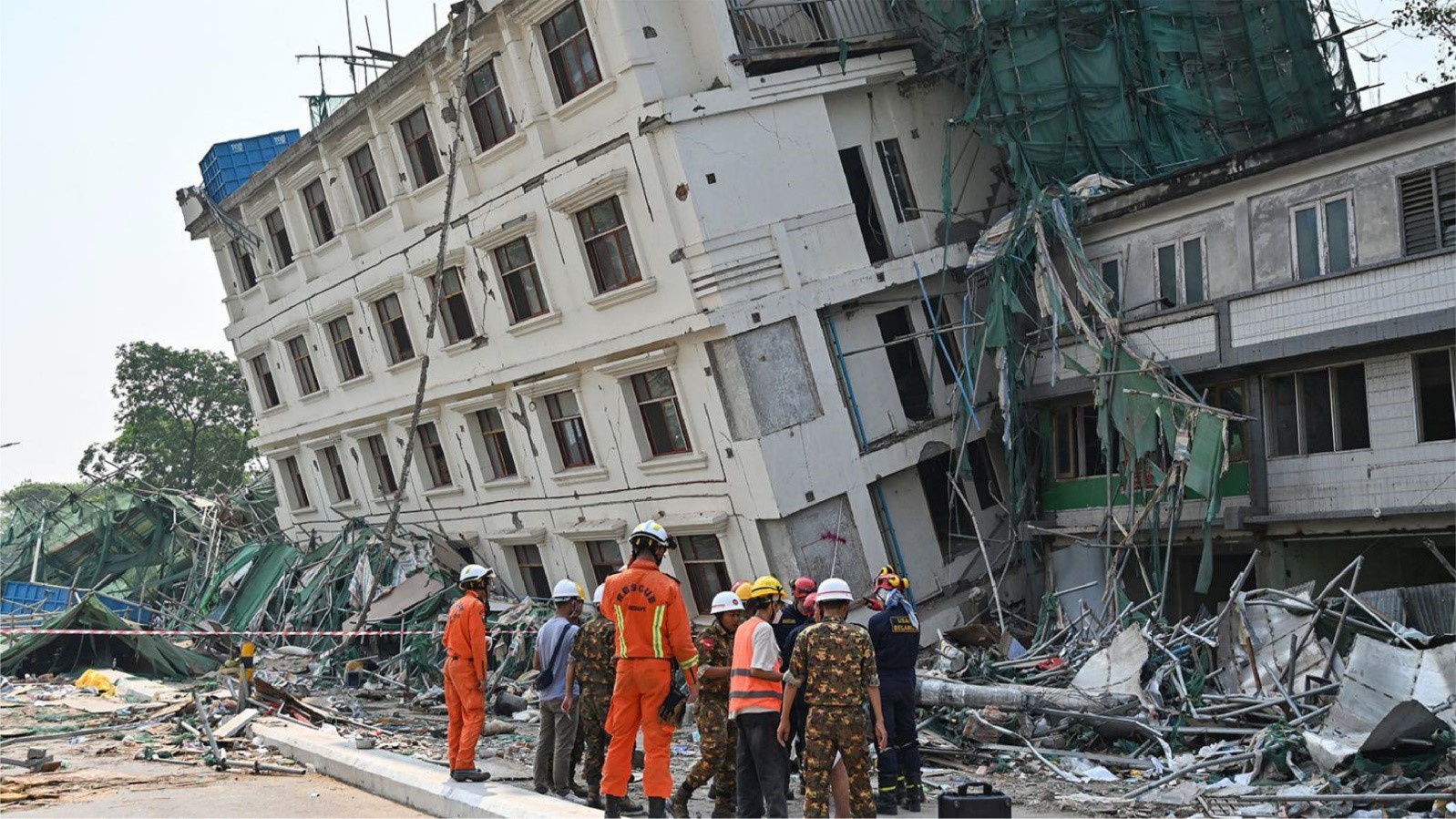A Detailed Examination of the 2025 Myanmar Earthquake
Published 26 May, 2025
On March 28, 2025, a catastrophic earthquake of magnitude 7.7 struck central Myanmar, marking the most devastating seismic event in the region since 1912. Originating along the Sagaing Fault — a 1,400-km-long dextral strike-slip boundary separating the Burma Microplate and Sunda Plate — the earthquake propagated a supershear rupture over 460 km with surface displacements exceeding 6 meters. The shallow (10 km depth) strike-slip mechanism unleashed violent shaking (Modified Mercalli Intensity IX) across densely populated urban centers, including Mandalay, Sagaing and Naypyidaw, while amplifying seismic energy in distant locations such as Bangkok, Thailand. The human toll was staggering over 4,900 fatalities and 6,000 injuries. Furthermore, widespread destruction of residential, governmental and religious infrastructure occurred.
Beyond immediate physical devastation, the event exposed systemic vulnerabilities in urban planning, historical preservation and transboundary disaster preparedness, underscoring the urgent need to reconcile rapid urbanization with seismic resilience.
In a multidisciplinary study published in the Journal of Dynamic Disasters, a team of researchers integrated seismic, geological and socio-economic analyses to examine the event’s mechanisms and consequences.
“Myanmar’s tectonic framework, shaped by the oblique convergence of the Indian Plate beneath the Burma Microplate at ∼35 mm/year, has long positioned the region as a hotspot for seismic hazard,” noted first author Khan Shahzada. “The Sagaing Fault, accommodating ∼20 mm/year of right-lateral motion, has generated recurrent large-magnitude earthquakes, including the 1930 (M 7.3), 1946 (M 7.7) and 1956 (M 7.0) events. However, the 2025 rupture uniquely highlighted cascading risks: its supershear velocity and extensive surface deformation triggered secondary disasters, from infrastructure collapse in Myanmar to high-rise failures in Bangkok’s soft-soil basins.”
Notably, a 33-story skyscraper in Bangkok collapsed, claiming 29 lives. These transboundary impacts underscore the interconnectedness of geophysical processes and human systems in South and Southeast Asia.
“By integrating fault models, historical seismicity records and on-ground impact assessments, we elucidated the relationship between tectonic dynamics and anthropogenic vulnerabilities,” adds Shahzada.
The report also critiques existing building codes, emergency response frameworks and heritage conservation practices. Based on the findings, the authors advocate for enhanced seismic monitoring, retrofitting of critical infrastructure and international collaboration in disaster risk reduction.
“As climate change and urbanization intensify exposure to natural hazards, the lessons from Myanmar’s catastrophe offer a critical blueprint for fostering resilience in tectonically active, rapidly developing regions worldwide,” says Shazda.

Contact Corresponding author.:
Umar Ahmad Noor
Department of Structural Engineering, National University of Sciences & Technology (NUST), Pakistan
uahmadnoor247@gmail.com, unoor.ms24nice@student.nust.edu.pk
Funder:
This study received support from the National Key R&D Project of China (2022YFE0210500), Jiangsu Province International Cooperation Project (SBZ2022000169), and Natural Key Project of China (52130807).
Conflict of interest:
The authors declare that they have no known competing financial interests or personal relationships that could have appeared to influence the work reported in this paper. The author Zhao-dong Xu is an Editor-in-Chief and the author Khan Shahzada is an Editorial Board Member for Journal of Dynamic Disasters, and were not involved in the editorial review or the decision to publish this article.
See the article:
In the Wake of the March 28, 2025 Myanmar Earthquake: A Detailed Examination
https://doi.org/10.1016/j.jdd.2025.100017